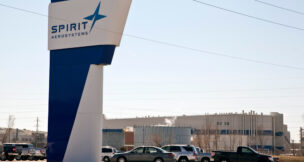Hampton Roads too reliant on federal dollars, economists warn
Economy grew in 2024, but federal dependence is vulnerability
Josh Janney //October 8, 2025//

Image by AdobeStock

Image by AdobeStock
Hampton Roads too reliant on federal dollars, economists warn
Economy grew in 2024, but federal dependence is vulnerability
Josh Janney //October 8, 2025//
SUMMARY:
The Hampton Roads economy grew for the fourth consecutive year in 2024 and is projected to continue growing this year; however, area economists warn that the region is overly reliant on federal spending, placing its economic health at risk in the event of future cuts.
The analysis, released Tuesday, was published in an annual State of the Region report from Old Dominion University‘s Dragas Center for Economic Analysis and Policy, with much of it authored by ODU professors and economists Bob McNab and Vinod Agarwal.
The report notes the region’s robust recovery from the COVID-19 pandemic, with economic growth since 2021 showing renewed trade activity and increased stability. The area’s gross domestic product increased by 2.6% last year and is on track for 2% growth this year.
Between 2021 and 2024, the region created jobs at a faster pace than in the previous decade. Last year saw the number of regional residents either working or actively seeking jobs rise to a record 883,768, up from 880,183 in 2023. Individual employment also rose to a record 856,716 workers (up from 852,926 in 2023), while unemployment was 3.1% (up from 2023’s 2.9%).
While the area’s economic performance has improved, relative to other metropolitan areas, there is still “much to be desired,” with its growth lagging behind faster-growing areas like Raleigh and Charlotte, North Carolina, the report concluded. In 2023, Hampton Roads ranked 146 out of 384 metropolitan areas, which the report described as “middle of the pack” performance.
However, “projecting economic growth,” the report added, “is an exercise fraught with uncertainty, and uncertainty has only increased in 2025.”
As home to more than 80,000 active-duty service members and about 60,000 federal civilian workers, Hampton Roads is heavily dependent on federal spending that also heavily supports the area’s colleges, universities, hospitals and other organizations. The defense sector is a major cornerstone of the region’s economy, as reflected in the presence of military installations such as Naval Station Norfolk, the world’s largest naval base, and shipyards.
Defense spending in Hampton Roads increased in 2024, a trend that was expected to increase this year and next. But if the federal government were to decrease defense spending, the report noted that the region would be particularly vulnerable.
The report anticipates that the federal deficit, projected to reach $2 trillion in fiscal year 2026, will continue to rise in the coming years. With that in mind, the report stated, it’s unknown how long defense spending can continue to increase at the current pace.
While Hampton Roads hasn’t been hit as hard as Northern Virginia when it comes to federal layoffs, the report still raises concerns about the impact of potential workforce reductions on the region’s economy.
In 2024, on average, according to the report, the ratio of federal civilian wages to private sector wages was 1.6 for Virginia. That means that for every job shed by the federal government, the private sector would need to generate 1.6 jobs to make up for the lost federal wages. “In other words, it is not enough to replace every federal job lost with a corresponding private sector job as wages in the private sector tend to be lower than wages across the federal government,” the report states.
The Trump administration‘s hostility to offshore wind and potential clawbacks of previously awarded federal funding are other areas of concern regarding federal funding.
“We opine that now is the time to increase efforts to diversify the region’s economic base to bolster private sector growth over the remainder of the decade,” the report says.
The Port of Virginia saw its traffic increase in 2024, but the report noted that tariffs have created headwinds in 2025.
“There are broad expectations that the tariffs, if sustained, will lead to higher prices late in 2025 and into 2026 and likely reduced cargo volumes through the port as well,” the report said. “How much of an impact will materialize is an open question.”
The hotel industry’s growth slowed last year, and the report suggests that economic uncertainty may undermine industry growth this year and 2026.
In more positive news, the report cited the Norfolk International Airport as having a significant positive economic impact on the region, marking a record number of passengers in 2024 and surpassing pre-pandemic demand. Last year, approximately 4.9 million commercial service passengers traveled through the airport. The report estimates that the airport generated $1.016 billion in statewide GDP and supported 15,624 jobs, which generated $632.7 million in employee compensation.
T
















